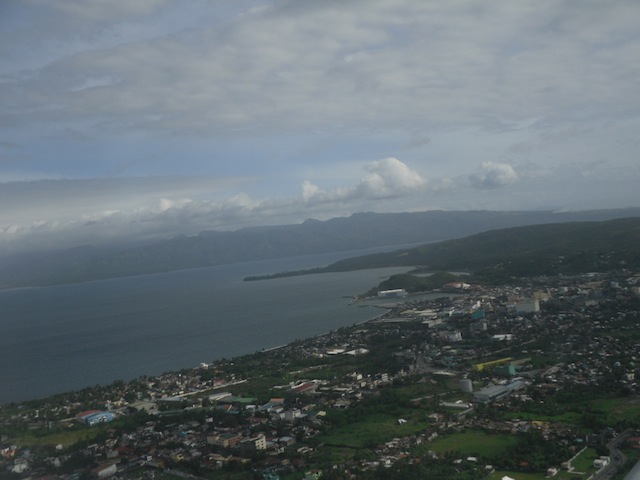The scenery around this port city is dazzling, but nearly all of the most striking features of the Legazpi landscape can kill people by the thousands.
The most obvious peril is the volcano. Mount Mayon rises up from the city’s outskirts into an almost perfectly shaped geometric cone, nearly 2,500 meters (8,000 feet) high. Two hundred years ago this week, an eruption killed 1,200 people, leaving behind ruins that are now a local tourist attraction. Mayon has erupted four times since 1999, and is dangerous even when it isn’t spewing lava. Heavy rains can send mudflows of ash and debris, known as lahar, down its steep hillsides and into villages.
The sparkling blue waters of the Gulf of Albay are a more deceptive threat. In an average year, three to five cyclones sweep in here from the Pacific, inundating low-lying coastal areas with storm surge. (Tacloban, the city flattened by Super Typhoon Haiyan in November, is just 400 km or 250 miles south of here.) Earthquakes are a risk in Legazpi, as are the tsunamis that quakes can trigger. As sea levels rise, Legazpi sits in one of the most vulnerable parts of one of the most vulnerable countries on the planet.
Dealing with disasters has become almost a way of life in Legazpi. That’s why this city of 180,000 and the surrounding province of Albay have become something of a laboratory for urban resilience. If there’s any place on the globe that can test whether city life can withstand the forces of nature and the looming threats of climate change, this may be it.
Written by Imelda V. Abano
– See more at: http://citiscope.org/story/2014/philippines-model-confronting-climate-change-and-nearly-every-disaster-you-can-think#sthash.8VnmqnTu.dpuf
Latest posts by EnviroNewsph (see all)
- Global fund aimed at protecting nature and accelerate investment in conservation, launched in Canada - August 25, 2023
- Why ‘loss and damage’ is the most bitterly fought-over issue at COP27 climate talks? - November 18, 2022
- U.S. hands over P2.3M in equipment and wildALERT system to PH to protect wildlife - December 16, 2020

